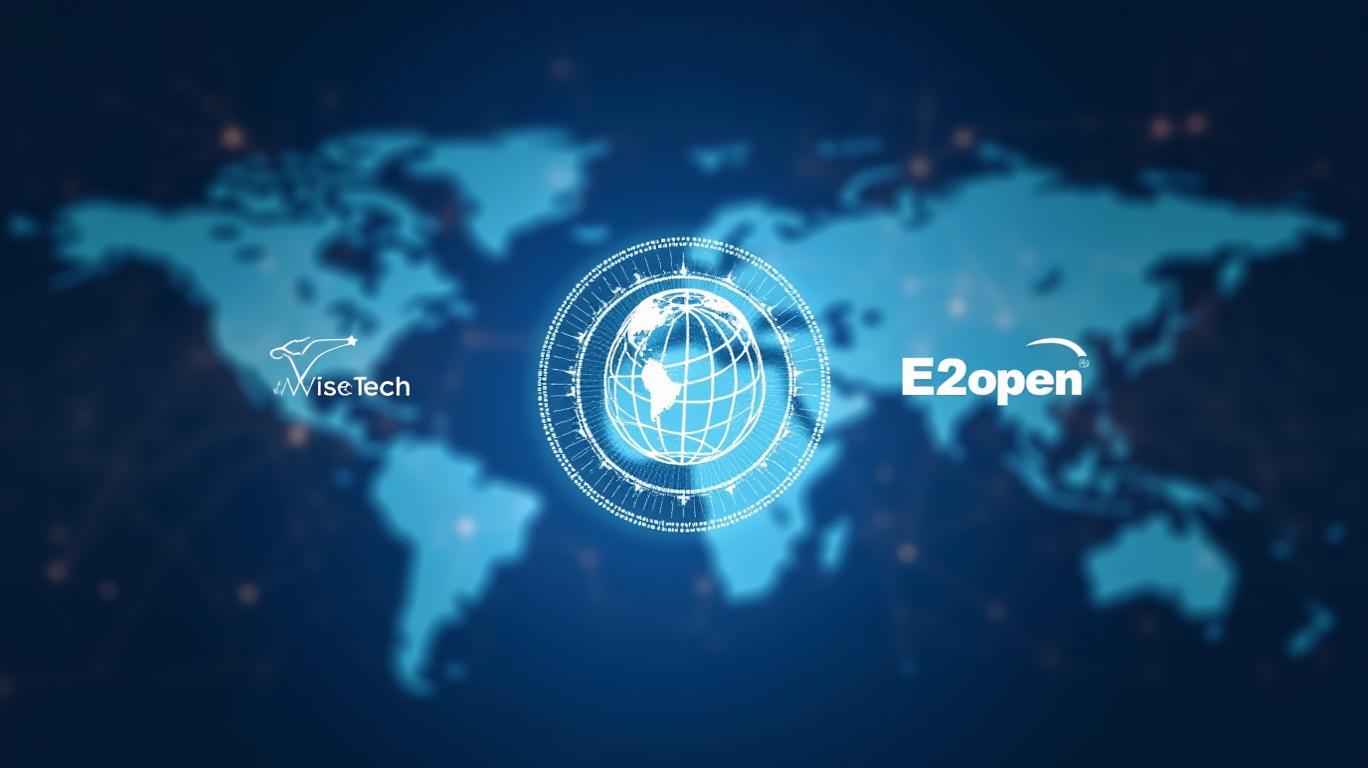S&P Global's Orbcomm Move: A Strategic Play for Supply Chain Dominance
In a bold bid to fortify its position in the global supply chain intelligence market, S&P Global has announced a dual-strategic partnership with ORBCOMM Inc., marking a pivotal step toward integrating cutting-edge maritime tracking technology with its analytics ecosystem. The move, which includes the acquisition of ORBCOMM’s Automatic Identification System (AIS) data services and a strategic equity investment, underscores S&P’s ambition to become a leader in end-to-end supply chain visibility solutions.

The AIS Acquisition: Powering Maritime Intelligence
S&P’s acquisition of ORBCOMM’s AIS business—a cornerstone of its partnership—grants access to decades of high-resolution vessel tracking data. The AIS system, operational since 2004, uses satellite and terrestrial networks to monitor over a million maritime assets, providing critical insights into cargo movements, environmental compliance, and geopolitical risks. This data will be integrated into S&P’s Market Intelligence division, bolstering tools like the Supply Chain Console and Panjiva. These platforms now gain the ability to predict disruptions, assess trade routes in real time, and evaluate the carbon footprint of global shipments—a feature increasingly demanded by corporations under pressure to meet sustainability targets.
The AIS integration also positions S&P to capitalize on a booming market. By 2030, the global supply chain visibility software sector is projected to exceed $15 billion, driven by rising demand for resilience amid trade wars and climate volatility.
Strategic Equity Stake and Alliance: Building a Data Ecosystem
Beyond the AIS acquisition, S&P’s strategic equity stake in ORBCOMM signals a long-term commitment to co-developing IoT-driven supply chain solutions. The partnership will combine S&P’s analytical expertise with ORBCOMM’s IoT infrastructure, targeting sectors such as heavy equipment logistics and intermodal shipping. This synergy aims to deliver real-time visibility tools for overland freight, trailer tracking, and port congestion analytics—areas where competitors like Descartes Systems and Trimble Navigation lag in maritime integration.
Market Implications: A Volatile Landscape Demands Innovation
The partnership arrives as supply chain disruptions remain a top concern for global businesses. In 2023, 82% of Fortune 500 companies reported supply chain bottlenecks affecting profitability, per a McKinsey report. S&P’s move directly addresses this pain point by offering predictive analytics fused with granular vessel data. For instance, its new tools could alert users to delays caused by geopolitical tensions in the Strait of Hormuz or environmental incidents like the 2021 Suez Canal blockage.
Moreover, the alliance strengthens S&P’s sustainability offerings. With 68% of institutional investors prioritizing ESG factors in 2025, the ability to track emissions from shipping routes provides a competitive edge. The integration of AIS data into S&P’s ESG analytics could attract clients seeking to align supply chains with net-zero goals.
Risks and the Road Ahead
Despite the strategic advantages, hurdles remain. Regulatory approvals for the acquisition are pending, and ORBCOMM’s reliance on satellite infrastructure exposes it to cybersecurity risks—a vulnerability S&P must mitigate. Additionally, the market is crowded, with rivals like S&P’s own PIERS platform and ORBCOMM’s competitors, such as ExactEarth, already offering AIS-based solutions.
However, S&P’s financial muscle and ORBCOMM’s technical know-how may prove decisive. S&P’s 2024 revenue of $8.5 billion (up 12% YoY) provides ample capital for R&D, while ORBCOMM’s 30-year IoT legacy ensures reliability.
Conclusion: A Blueprint for Supply Chain Supremacy
S&P Global’s Orbcomm tie-up is a masterstroke in a sector primed for growth. By merging AIS data with its analytics, S&P is not just enhancing existing tools but redefining supply chain intelligence. The move positions it to capture a larger slice of the $15 billion market, while its equity stake secures a foothold in IoT-driven logistics.
Key data points reinforce this outlook:
- ORBCOMM’s AIS system tracks over 1 million vessels, covering 95% of global maritime trade.
- S&P’s supply chain division saw a 27% revenue jump in 2024, outpacing its broader financial data offerings.
- Over 70% of surveyed logistics firms in 2025 cited real-time vessel tracking as their top tech priority.
In a world where supply chains are the new battleground for corporate survival, S&P’s partnership with ORBCOMM isn’t just strategic—it’s essential. The alliance sets a new standard for data-driven resilience, and investors would be wise to watch closely as this merger unfolds.


_442a2dcc1749832873286.jpeg)
_e68fac6d1749831664430.jpeg)






